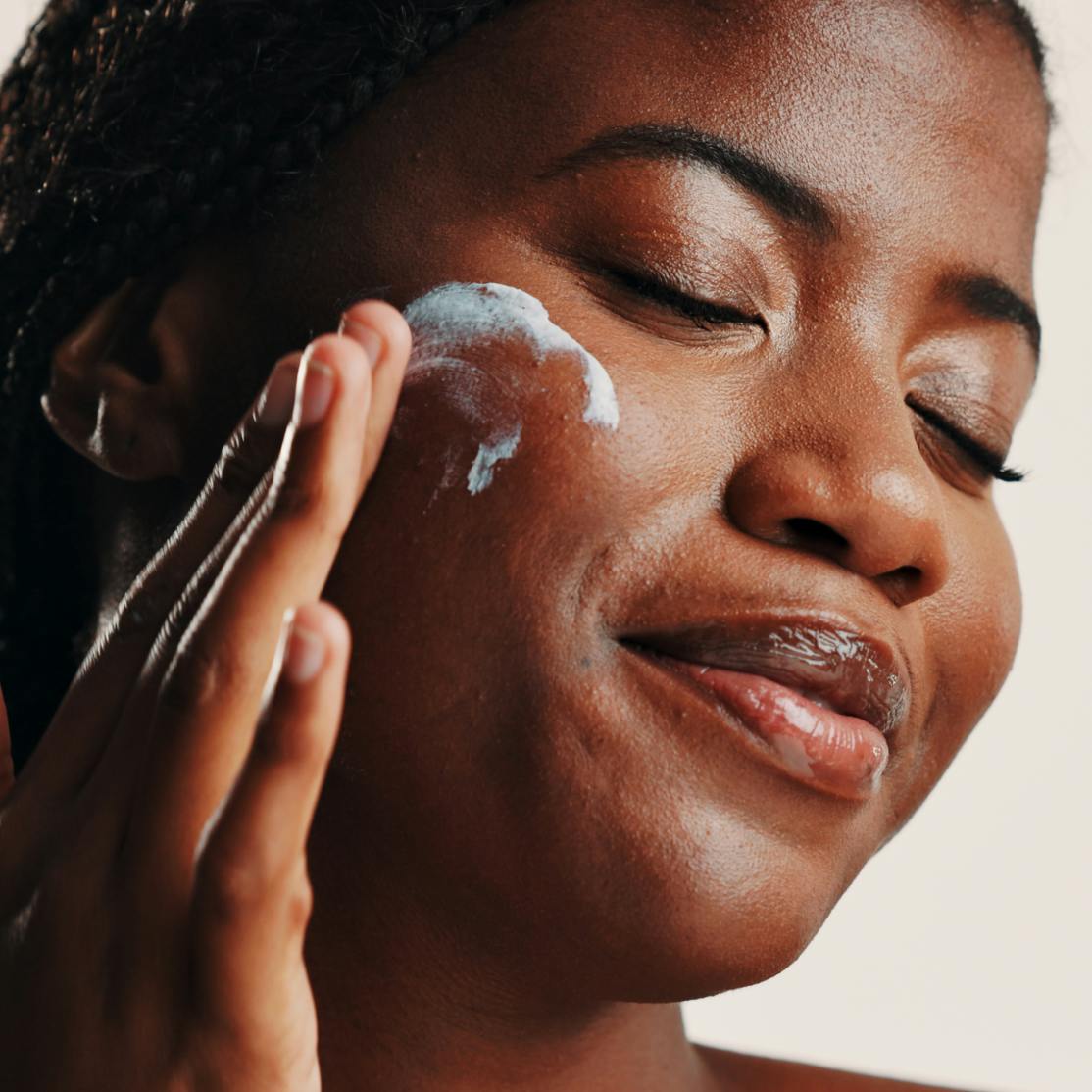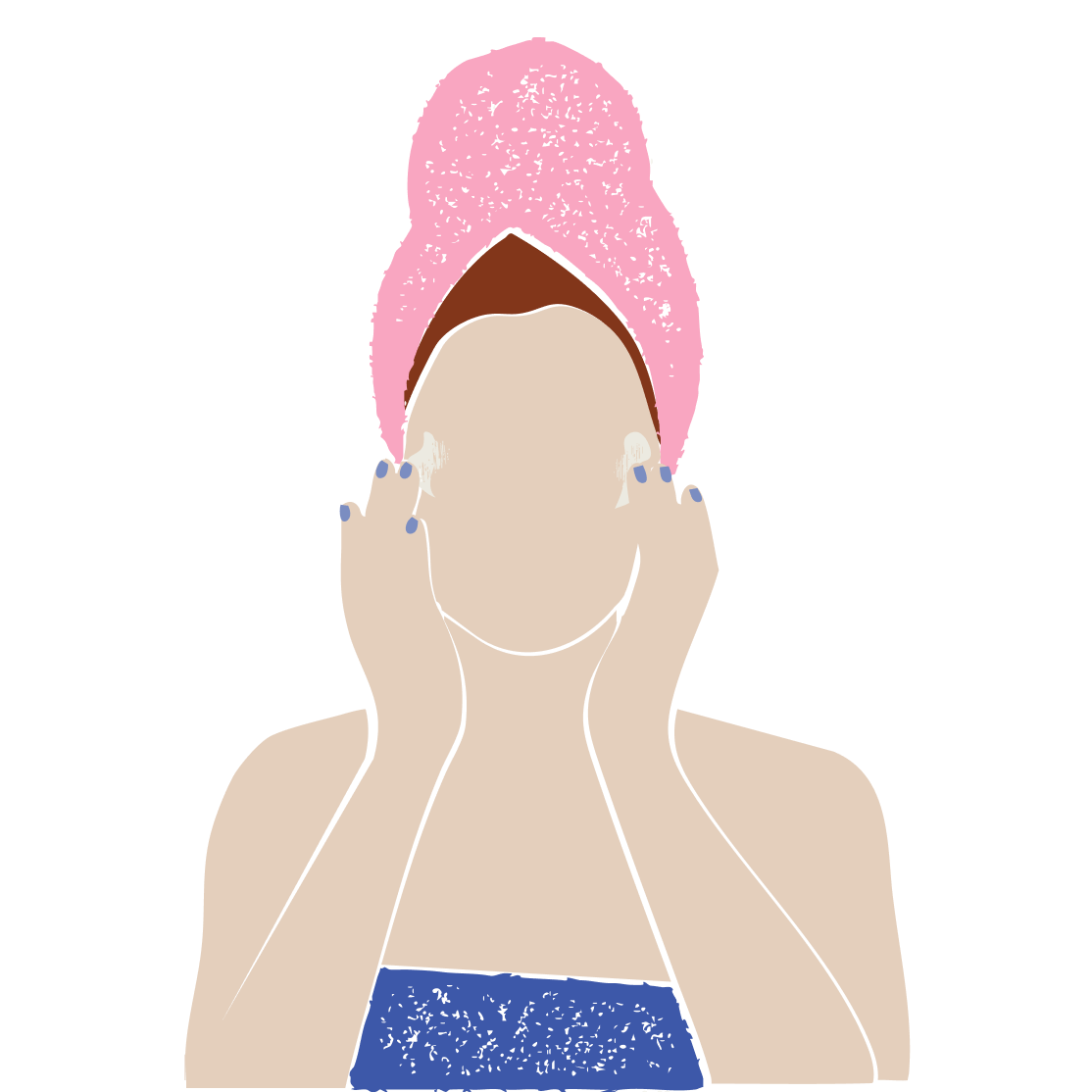First perimenopause made your skin dull, and now you're noticing it's sagging in ways it never did before. Before you start googling plastic surgeons in a panic, here's some good news: Collagen supplements can actually help improve your skin's hydration and elasticity during perimenopause and beyond. And Midi clinicians can help recommend and prescribe a range of options, including over-the-counter and prescription topical creams, to help boost the health of your skin.
First things first, what is tretinoin? It is a prescription-strength topical form of retinoic acid, which is a chemical derivative of vitamin A. Originally FDA-approved as an acne treatment in 1971, tretinoin was found to also improve signs of photoaging, such as wrinkles, brown spots and skin laxity.
Cut to the present day, and tretinoin is the preeminent, dermatologist-recommended treatment for acne and wrinkles, not to mention skin sagging, dullness, and brown spots—all the issues we deal with as we get older and when we go through perimenopause. Tretinoin is basically a one-and-done topical fixer. This is not an overnight fix, however.
The visible results (and there are many) build up gradually over time. How much time? The effects may take up to 12 weeks of consistent use to show up, but this is one of those tried-and-true things that’s worth the wait. Read on to learn more about retinoids and how to use tretinoin to improve your skin in the long run.
What Is Topical Tretinoin and What Does It Do?
Topical tretinoin is a retinoid (as is adapalene). These forms of retinoic acid are chemical derivatives of vitamin A, and they work by interacting with receptors inside skin cells to help regulate skin cell turnover—the natural, healthy shedding of dead cells from the surface as fresh, new cells replace them. Here's the thing: Skin cell turnover starts to slow down as early as your 30s, which is why now is a great time to add tretinoin to your routine. It keeps pores clear, brightens dull skin, and helps fade brown spots. Regulating skin cell turnover is one of the primary reasons why retinoids like tretinoin are a derm go-to for treating adult acne and addressing all kinds of antiaging concerns at the same time. It's a two-for-one situation!
Tretinoin also stimulates collagen and elastin production, ultimately increasing skin volume and firmness and softening fine lines. Research has proven that prescription-strength tretinoin penetrates the dermis and acts directly on skin cells called fibroblasts. This prompts the production of collagen and elastin. During perimenopause, the decrease of estrogen contributes to the decrease of collagen and elastin. (Estrogen hormones stimulate skin cells to get into action and make more of these proteins, and studies show that collagen can decrease by 30% in the 5 years following menopause.)
Once you’re over age 30, the body’s natural production of collagen and elastin starts to dwindle, so replenishing them becomes essential. If you’re in your 30s, it’s not too early to include tretinoin or retinol—its milder, over-the-counter (OTC) cousin—into your skin care routine proactively. The reality is, from your mid-20s onward, your skin will lose about 1% of its collagen each year. Estrogen starts to seriously decrease during perimenopause, and that causes a decrease in both collagen and elastin, which is why tretinoin is such a critical ingredient to use regularly.
Preparing for Tretinoin Use
Before beginning to use a tretinoin cream- or gel-based formula, it’s essential to have a good, basic skin care routine in place. (File this under: Things you know already.) You’re probably using a mild facial cleanser, maintaining a healthy skin barrier with a daytime and nighttime moisturizer, and using sun protection every single day. These are the staples that keep your skin barrier healthy and prepared for using a prescription-strength tretinoin.
Tretinoin comes in various strengths, ranging from 0.01% to 0.1%. If you have sensitive skin, your healthcare professional will likely prescribe a lower strength to minimize irritation as you introduce it into your routine. You may also want to consider starting with an OTC retinol product first. Think of retinol as training wheels when you’re learning to ride a bike—a gentler way to get started before you level up.
Retinol has been proven in numerous studies to improve signs of photoaging, like wrinkles, brown spots, and skin laxity, by regulating skin cell turnover and stimulating collagen and elastin production. Retinol is converted into retinoic acid in the body, so it’s a little bit more indirect and less potent, but it’s still proven to be effective—just with more gradual results.
True Stories Of Transformation
Combining Tretinoin with Other Products
All retinoids, from tretinoin to retinol, are recommended for nighttime use because the ingredient tends to make your skin more sensitive to sunlight. This is why daily sun protection is such a nonnegotiable when you’re using tretinoin. You'll want to use a daytime moisturizer with broad-spectrum SPF 30 or higher—and yes, that means every single day, even when it's cloudy.
To minimize dryness and irritation (two very common side effects), use a moisturizer after applying a tretinoin cream or gel. Layer on a nourishing cream that contains humectants like hyaluronic acid (HA) to bring moisture to your skin, plus emollients such as squalene and ceramides to seal in that hydration.
If you use any other potentially irritating active ingredients, such as benzoyl peroxide for acne, as well as AHA or BHA acids like salicylic acid, play it safe and skip them on tretinoin nights. Bombarding your skin with too many actives at once can be a fast track to inflammation and irritation. Listen to what your skin is telling you: If it’s red, itchy, or irritated, take a break for a night or two. When in doubt, consult your dermatologist about how to layer prescription tretinoin with other active ingredients.
Applying Tretinoin
It might seem obvious but it’s worth saying: When using a prescription-strength product like tretinoin, following instructions carefully matters. For example, a pea-size amount is all you need for the entire face and neck. You don’t want to slather on tretinoin like a regular facial moisturizer. The idea is to apply a very thin layer of tretinoin over the skin, and apply it onto clean, dry skin: After using a mild facial cleanser (no potentially irritating acne washes with benzoyl peroxide or exfoliating cleansers with glycolic or salicylic acid), pat skin your dry and apply a tretinoin cream or gel.
The application process
The key to success: Start gradually and stay consistent. Tretinoin can be irritating for sensitive skin types. It can cause redness, flaking, and dryness, which is why healthcare professionals recommend starting slowly. Apply a retinol product two nights per week and then work up to every other night as your skin begins to tolerate it. And, do not use exfoliating acid products, like a glycolic or salicylic acid cleanser or peel pad, on the same night as a retinol.
Tretinoin should follow your cleansing step. And remember to read your skin: If it’s red or irritated, or if a product stings when you put it on, take a break. Use a simple, bland, hydrating cream instead and avoid active ingredients until your skin calms. Be patient with the process. Tretinoin takes time to work, and consistent use is what gets you results over the next 6 to 12 weeks.
To minimize dryness and irritation, healthcare professionals recommend applying a hydrating moisturizer after your tretinoin step. Be sure to use one without additional active ingredients that are potentially irritating, such as retinol or vitamin C. Choose a cream or lotion that contains humectants like HA and glycerin to attract moisture to skin and emollients such as squalene and ceramides to seal in that hydration.
The sandwich method
For those with sensitive, dry, or easily irritated skin, dermatologists suggest using the sandwich technique when applying tretinoin to minimize dryness and irritation and to ensure that you’re protecting the skin barrier. This involves first applying a lightweight HA hydrating serum onto clean, dry skin. Then put on your tretinoin, and top that with a richer cream or lotion that contains hydrating ingredients and emollients like ceramides to seal in that moisture. The moisturizers won’t dilute the efficacy of the active ingredient, but they will do the work of countering irritation, redness, dryness, and peeling from tretinoin use.
What to Expect in the First Few Weeks
Tretinoin is a prescription-strength active ingredient, so there can be side effects. This is why it’s important to start slow, using it twice per week at first and then working up to nightly or every other night as your skin begins to tolerate it.
Here are a few things to know:
- At first you may experience extreme dryness because tretinoin decreases sebum production. (Remember, it started life as an acne medication.) If you don’t follow your tretinoin application with a moisturizing step—and moisturize your skin whenever it feels dry—your face can get red, irritated, itchy, and inflamed.
- You may experience peeling or flaking even with moisturizer, because retinoic acid regulates skin cell turnover and the shedding of dead skin cells from the surface. The good news? With continued, consistent use, the flaking will subside as your skin adjusts to the medication.
- Tretinoin also makes skin photosensitive, so daily use of broad-spectrum sunscreen is a must. This is also why you should use tretinoin at night.
What Not to Do While Using Tretinoin
Tretinoin tends to irritate sensitive skin, and any skin type can experience inflammation and redness if tretinoin is used along with another potentially irritating active ingredient like AHA or BHA acids, benzoyl peroxide, or vitamin C. Remember, as tretinoin regulates skin cell turnover, dead skin cells are shedding—that means double exfoliating is simply not necessary. A good rule of thumb: Stick to one active ingredient per application. And listen to your skin. If it feels and looks red or is stinging, then take a night off from active ingredients and just moisturize with a soothing, emollient cream or lotion.
Be cautious about waxing or any other kinds of skin treatments when you’re using tretinoin. Dermatologists recommend stopping the use of retinoids 3 to 5 days before having any skin procedure done—from simple waxing and facials to medical peels and lasers.
Because tretinoin makes your skin photosensitive, daily sun protection is a must. (Tretinoin and sun exposure is a recipe for a bad sunburn.) Wear a daytime moisturizer with a broad-spectrum SPF 30+ every single day, even cloudy ones. And if you’re going to be outdoors a lot, up your SPF to 50+ and don’t forget to reapply throughout the day.
When to Talk to a Clinician
Since tretinoin is a prescription medication, you’ll need an Rx from a healthcare professional. They can recommend the right strength, and how often to apply it.
If you have severe or prolonged side effects, such as redness, irritation, peeling, flaking, and dryness, contact your clinician for guidance. You may need to take a short break from all active ingredients for a few days and just use the basics: a mild cleanser, a hydrating moisturizer without active ingredients, and a daily moisturizer with SPF 30.
Heads up: Topical retinoids like tretinoin are not recommended for use during pregnancy. If you are pregnant or planning to become pregnant, talk with a healthcare professional about the use of tretinoin.
Your clinician should walk you through your personal tretinoin game plan over time and answer any questions that you have, including how to layer products and perform the sandwiching technique, as well as what potentially irritating active ingredients to avoid using at the same time as tretinoin (AHAs, BHAs, benzoyl peroxide).
Before and After: Results You Can Expect
The effects of tretinoin are gradual and can take up to 12 weeks to show up. Everyone’s timeline is different, and initial improvements may be experienced as soon as 2 weeks. With consistent use, you can expect to see improvements like smoother skin texture, acne will begin to clear, and your skin tone will become more even. Over the span of 12 weeks to 6 months is when the long-term collagen- and elastin-building benefits kick in. Studies have shown that these collagen- and elastin-boosting improvements get even better over 12 months of consistent tretinoin use. This results in firmer skin and the softening of fine lines and wrinkles.
Key Takeaways
- Begin gradually: Include a prescription-strength topical tretinoin in your skin care routine twice per week at night, then work your way up gradually to every other night once your skin adjusts to the medication. You can then apply nightly when your skin can tolerate it.
- Apply a tretinoin gel or cream to clean dry skin: Do this after washing with a mild facial cleanser. Use a pea-size amount for your face and neck. A small amount is all you need!
- Apply the right facial moisturizer for you: To counter potential dryness and irritation, you can apply a hydrating facial moisturizer that has humectants (like HA) and emollients like ceramides after your tretinoin step.
- Do not use other potentially irritating active ingredients: This includes vitamin C, benzoyl peroxide, or AHA and BHA acids. Avoid using them the same night that you use tretinoin.
- Put a moisturizer on before or after tretinoin: To avoid dryness and irritation, derms recommend the sandwiching technique: Layer a hydrating serum with HA on clean skin first, then apply tretinoin, followed by a HA-based moisturizer on top.
If you’re in perimenopause or menopause and want guidance from clinicians who specialize in women’s midlife health, book a virtual visit with Midi today.
Hormonal change is at the root of dozens of symptoms women experience in the years before and after their period stops.
Our trained menopause specialists can help you connect the dots to guide you towards safe, effective solutions.
Whether you need personalized guidance or a prescription routine to tackle symptoms—including vaginal dryness and irritation, brain fog, hot flashes, sleep trouble, mood swings, and weight gain—we’ve got you covered.
Midi’s mission is to revolutionize healthcare for women at midlife, wherever they live and whatever their health story. We believe that starts with education, to help all of us understand our always-changing bodies and health needs. Our core values guide everything we do, including standards that ensure the quality and trustworthiness of our content and editorial processes. We’re committed to providing information that is up-to-date, accurate, and relies on evidence-based research and peer-reviewed journals. For more details on our editorial process, see here.








